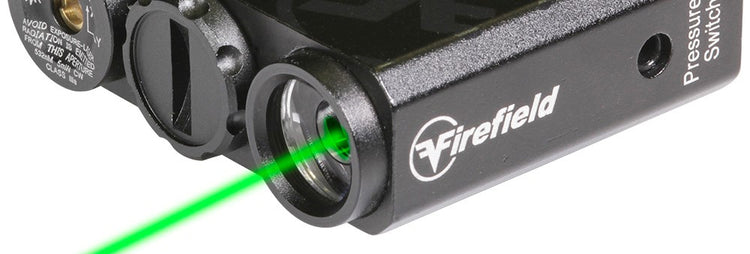By Firefield •

Baltimore, Dallas, Nashville, Santa Cruz, Milwaukee, Philadelphia, Cincinnati, Brooklyn…perhaps even in your own backyard—vicious attacks during broad daylight, with cars and people passing by, are increasingly caught on camera. To become complacent during the day is compromising your safety. Don’t let daylight provide you with a false sense of security. Bad people do bad things no matter what time it is. As someone who has invested their time and money into protecting themselves, you deserve the best and most efficient gear available to defend yourself.
There is no doubt that a person can be speedy and dead-on accurate with iron or aftermarket sights, but it requires a lot of training and practice. Plus, it doesn’t guarantee that when it comes down to it, you’ll be able to perform the same when faced with a life and death situation.
Yes, regular handgun training may help compensate for the tunnel vision, loss of dexterity and shaky limbs but there is absolutely no way to predict how you will respond when faced with a threat. Any accessory that aids in stopping a threat is worth serious consideration. One of these accessories is a laser sight.

According to explainthatstuff.com, put very simply, a laser is “a tube that concentrates light over and over again until it emerges in a really powerful beam.” Firearm lasers come in either red or green and are either integrated into the gun’s grip, mounted on a rail, inserted internally replacing the guide rod, clipped on the trigger guard or integrated into the rear sight. Laser sights will project a beam of light in the form of a dot on your target. Once sighted in, the laser should point exactly where your bullet will hit.
When used correctly, a laser helps you aim quicker, remain situationally aware and get on target in the dark—so you can accurately take your shot.
To learn more about lasers, click here.
Red lasers for pistols became popular after 1984 when Ed Reynolds from Laser Products Corp. (now Surefire,) was asked to design a futuristic laser to mount on an AMT Hardballer for the movie, “The Terminator.” At the time, it was definitely gimmicky and very ‘tacticool.’ And like a lot of innovative things when first introduced, not very welcomed by the ‘serious’ shooting community.
Just look at the U.S. release of the GLOCK. It was the War of the Worlds of the anti-gun lobby at the time. In fact, you’ll still find gun folks who say the GLOCK sucks and is totally unsafe. (Not true, by the way.)
Anyway, lasers became increasingly popular. Maybe for their cool factor at first, but as more people started using them and more gun manufacturers started putting them on their guns, the laser became a legitimate tool for increasing speed and accuracy, especially in low-light situations.
The first green laser sight was developed again by Surefire in the mid-90s; however, it took over 10 years for companies to get the technology right. If you research the pros and cons of red vs. green laser sights, you’ll see most articles say the red laser is cheaper to buy because it is simpler to make, lighter in weight, more compact and conserves better battery life. Green lasers, because they are internally more complicated, are said to be bulkier, more expensive and drain the battery quicker. However, only part of this is true today.
Lasers are regulated by the U.S. government and both red and green lasers made by any manufacturer are limited to a maximum power output of 5mW. However, there is no arguing that green appears brighter to us because our eyes’ rods and cones are more sensitive to green light than red.
Green lasers are undoubtedly more versatile than red because green is still highly visible in broad daylight, while red may be nearly impossible to detect in certain circumstances.
For example, Firefield’s Charge AR laser sights designed for the AR-15 are available in either green or red. The green laser is visible out to 50 yards during the day and 600 at night, while the red is visible only 20 yards during the day and 300 at night.

As far as weight and size is concerned, we’ve come far enough to where if there are differences, they are so slight and don’t matter. The Charge AR lasers both weigh 2.4 ounces and have the same width, length and height measurements.
The one truth and the only con (in my opinion,) to green lasers is the battery drain. Red lasers are significantly more energy-efficient. The Charge red laser will last up to 40 hours on one CR2 battery, while green has a maximum of 3.5 hours continuous run time. Though this is a significant difference, you must remember that you will not be running your laser constantly and not even all the way through your range time.
Regardless…
Though lasers, both green and red, offer many benefits, don’t let them be your crutch. Electronics fail. Batteries die. You should always devote time during your training to practice shooting using your iron sights.

